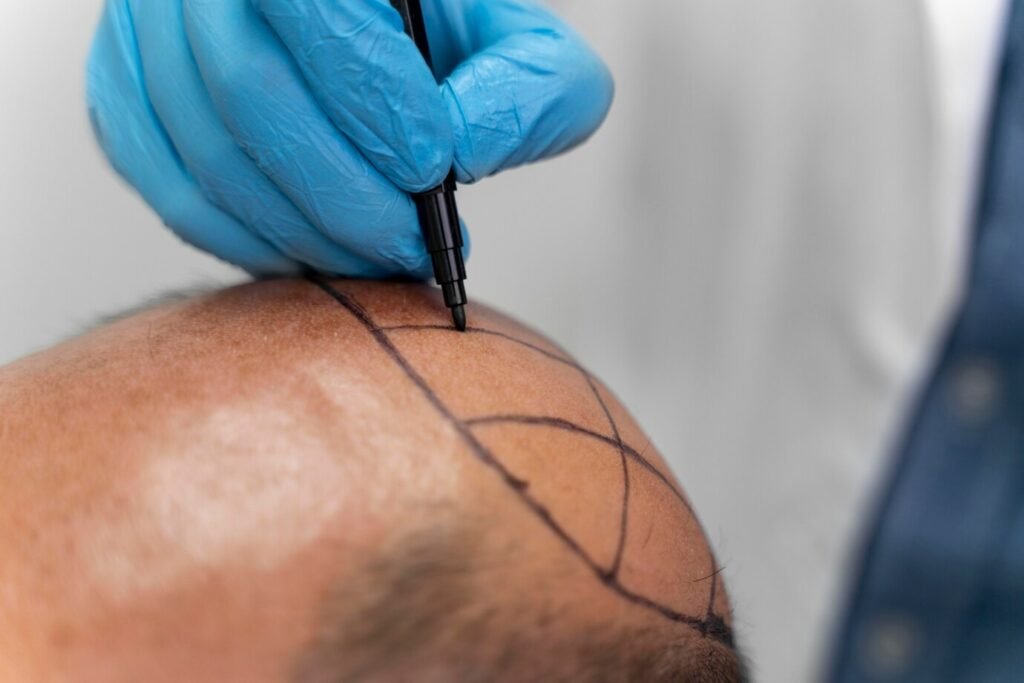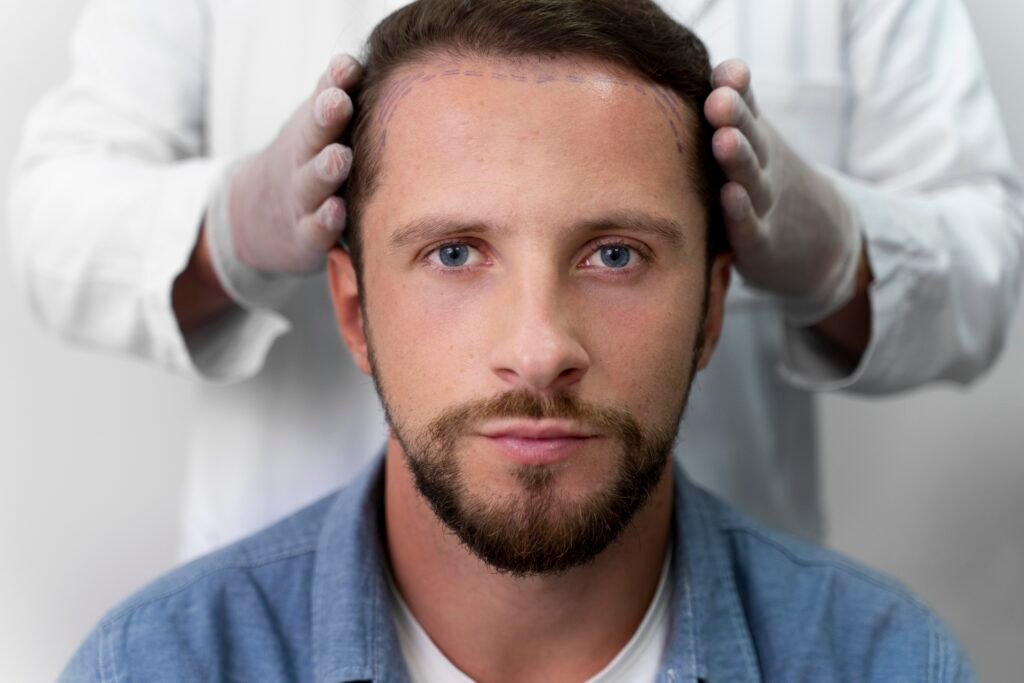FUE
Hair Transplant
What Is A Sapphire FUE Hair Transplant
The Sapphire FUE technique has gained popularity in hair transplantation due to its high success rate and ability to maintain tissue integrity, reducing the risk of infections. This method involves harvesting hair follicles individually from the donor area using a sapphire stone scalpel and transplanting them to the recipient area.
Candidates For Sapphire FUE Hair Transplant
Suitable candidates for Sapphire FUE hair transplantation typically include:
- Individuals experiencing severe hair loss, including men with beard hair loss.
- Those over 25 years old.
- Individuals in good overall health with a sufficient donor area of high-quality hair.
Pre-Procedure Instructions For Sapphire FUE Hair Transplant
Before undergoing a Sapphire FUE hair transplant, patients should follow these essential pre-operative tips to ensure a successful procedure and minimize risks:
- Quit smoking for at least two weeks prior to the surgery to promote healthy follicle growth.
- Refrain from consuming alcohol for at least one week before the procedure to avoid potential complications with anesthesia.
- Avoid natural blood thinners like green tea to prevent excessive bleeding during and after the procedure.
- Eliminate stimulants such as coffee for at least four days before the surgery, as they can affect anesthesia.
- Maintain a balanced diet to support overall health and facilitate recovery.
- Discontinue medications that may thin the blood, such as aspirin and ibuprofen combinations, after consulting with a doctor.

Stages Of The Sapphire FUE Hair Transplantation
The Sapphire FUE hair transplant procedure typically involves the following stages:
- Hair and Scalp Examination: The surgeon evaluates the quality and density of hair in the donor area and determines the number of grafts required for transplantation.
- Determining the Shape of the Hair: The surgeon designs the hairline to ensure natural-looking results that complement the patient’s facial features.
- Shaving Hair: The entire head is shaved to facilitate the extraction of follicles from the donor area.
- Local Anesthesia and Transplantation: Local anesthesia is administered to both the donor and recipient areas. Hair follicles are then extracted individually using a micromotor and preserved in a serum before transplantation.
- Hair Transplantation: The surgeon opens channels in the recipient area and carefully implants the harvested grafts at the appropriate depth and angle.

What Should The Patient Expect After The Sapphire FUE Hair Translation Is Complete
Following a Sapphire FUE hair transplant, patients should anticipate the following:
- Crusting on the scalp may occur initially and typically starts shedding after five to six days.
- Temporary shock loss, where transplanted hair sheds, may occur within 15-21 days after the procedure, signaling the success of the transplantation.
- Hair follicles will begin to grow after three months, with significant growth noticeable after six months.
- Complete hair growth is typically achieved within one year post-transplant.
Post-Procedure Instructions For Sapphire FUE Hair Transplant
After the completion of a Sapphire FUE hair transplant, patients should adhere to the following post-operative instructions for optimal results:
- Wear a headband for the first 48 hours to prevent swelling.
- Avoid bending the head to prevent eye swelling during the initial three days.
- Refrain from washing the hair for the first three days.
- Avoid swimming in the sea for three months and in pools for two months.
- Abstain from exercising to avoid sweating.
- Avoid Turkish baths or saunas for at least a month.
- Protect the scalp from direct sunlight, heat, rain, dust, and humidity, preferably by wearing a medical hat when outdoors.
- Quit smoking for at least two months to support follicle growth.
- Use medical shampoo for hair washing and avoid chemical shampoos.
- Take prescribed medications and follow additional instructions provided by the doctor.
- Refrain from sexual intercourse for one week post-procedure.
- Consider additional treatments such as plasma injections, cold laser sessions, and hair vitamins to enhance follicle growth.

